As the BALTOPS exercise enters its second week, the Royal Navy say that the demanding opening stage tested the crew of HMS Kent to the limit.
Exercise BALTOPS is the largest annual multinational exercise in the Baltic Sea. Its purpose is to test the skills and capabilities of the participating nations and their ability to fight together.
The frigate is one of two Royal Navy warships joining more than two dozen vessels, a similar number of aircraft and upwards of 3,000 military personnel in the annual international test of naval and air power, in 2020 in its 49th year.

According to a Royal Navy news release here:
“Portsmouth-based Kent has covered well over 500 miles during Baltops 2020 from the southern Baltic and around the Danish island of Bornholm, to the Latvian coastline. As the exercise name suggests, the goal of Baltops is to test the ability of NATO and allied/partner nations to guarantee the freedom and security of nations with a Baltic coastline. In that context, the exercise runs the gamut of seafaring and naval warfare: air and submarine defence, surface warfare, manoeuvring with other vessels in close proximity, sailors falling overboard (and being rescued by the swimmer of the watch), refuelling (courtesy of the American USNS Supply).
It’s been a busy year since we last operated in The Baltic Region and participated in #Baltops. Since then we’ve been to 🇬🇮 🇬🇷 🇧🇭 🇴🇲 🇦🇪 🇲🇹 🇬🇮, the Arctic Circle, the Barents Sea and the Atlantic. https://t.co/QZVatvPtqv
— HMS Kent (@hms_kent) June 8, 2020
The upper deck gunners tested their marksmanship with machine-guns and Miniguns (ship-mounted Gatling guns) and the 30mm Automatic Small Calibre Gun (ASCG) against dummy surface targets before ‘air attacks’ as Banshee drones – 9ft long, 8ft wingspan, moving at about 120mph – were deployed against Kent. Also put to the test were the flight team as maintainers prepared and loaded a dummy Sting Ray for the Merlin helicopter, which promptly headed off on a sortie with the torpedo at the ready.”
The Royal Navy add that aside from HMS Kent, minehunter HMS Ramsey is also involved in the exercise, working as part of a NATO mine warfare task group which she joined last month.




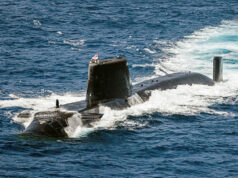

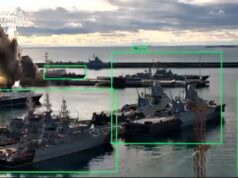
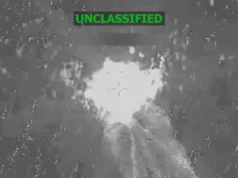

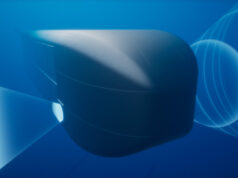
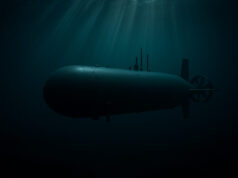



Do these frigates still carry depth charges for the helicopters?
Hi Nicholas,
Surprisingly, according to Wikipedia as of 2018 the RN retained MK11 Mod 3 for its Wildcats and Merlins. Also on the RN website the MK11 is still listed for the Merlin. So I guess the short answer is Yes!
https://www.royalnavy.mod.uk/the-equipment/aircraft/helicopters/merlin-mk2
Cheers CR
Absolutely. In shallow waters and against some targets UUV’s/Divers/SDV’s they’re the best weapon to use.
Yep still used. Not the greatest weapon to prep for use. Its a thin cased weapon and having one preped ready to go on the upperdeck is something of a hazard.
But they are great for shallow targets, anti diver, shot across the bows of Large vessels (BIG Water Spout not easily missed ) and most importantly fishing for Tuna.
Well the article said that the deck gunners were training against the 120mph drones. This was testing the smaller weapons, and it’s likely that somewhere like the Strait of Hormuz that that’s the kind of attack they would face.
If the ship came under missile attack, hypersonic, supersonic or subsonic, it will be met with our own missiles. No way would we ever be fighting off missile attacks with machine guns or miniguns.
They will likely had anti missile drills and training during the rest of the exercise.
I know its not the same thing and i get your point but I’m sure I read that more aircraft were shot down in the Falklands by GPMG’s etc spraying off at incoming aircraft. I accept a Skyhawk ain’t a hypersonic missile but as you say, that’s not likely to be their opposition in The Gulf.
As for what the Russians and Chinese are doing, while I guess they need to be watched, i do take their claims with a pinch of salt, if we’re ‘economical’ with the truth about our capabilities, I’m sure they are too.
Related here is a really good article on Save the Royal Navy about LMM / Martlet missile with an awesome picture of a Wildcat fully tooled up with 20 missiles…
https://www.savetheroyalnavy.org/the-martlet-missile-wildcat-helicopter-gets-its-claws/
Cheers CR
Certainly looks the business with all those launchers attached!
Wouldnt want one of those popping out from behind a container ship and lighting you up as a target!
It would be interesting to know how many missiles are are buying, as they seem to be the future for a lot of capability.
What i don’t get is why they are not also being integrated onto the Merlin’s. With the fleet spread so thinly, whatever helicopter that is on board needs to be able to help tackle a swam attack.
Hi Steve,
The article states that a £48m contract has been signed for 1000 rounds. The weapon is pretty simple and because it current version is laser guided only one target can be engaged at a time.
However, MBDA are working on a fire and forget seeker header, so multiple target engagement would then be possible.
As for the Merlin, well that platform as no ASW capability in RN service. I have read quite a bit about that over the years and some of the articles have hinted that there is a degree of doctrinal orthodoxy involved – Wildcat is the attach helicopter and Merlin the ASW platform! Such blinkered thinking is not unknown in any large organisation, but I suspect that any thinking doctrinal or otherwise is influenced by money!!
Given that the Wildcat is cleared for the same sonar than Merlin carries (South Korea) and Merlin is cleared for ASW (not sure which missile, Italy) the cost to the RN would / should be minimal for filling these to capability gaps which I actually think are serious, especially in high intensity or single ship / helicopter ops.
On the plus side MBDA / MoD appear to be coming up with the goods again. As I have said before MBDA / MoD appear to have a good relationship that is generating really good results. It is, sadly, a rare high spot in Defence Procurement.
Cheers CR
‘doctrinal orthodoxy’. What an excellent way to put it. Far too much of that kind of thinkinkink from the RN. Is this where the relaxed attitude to no anti-ship missiles in a few years because they think its the subs job alone?
As we know Generals/Admirals only decide to talk up about capability shortages after they retire can no longer do anything about it. Although i can’t blame them as they will get immediately sacked if they were to do so and like the rest of us they need their income / pension.
Seems the RN needs a drastic shake up of its combat awareness thinking. Like just like the Grand Fleet not trained to fight at night 100 years ago.
If I was in charge i would challenge many of its current preconceptions.
Glaring weaknesses in Sub Killing now and into the foreseeable future. Glaring weakness in Surface Strike.
Wake up before its too late!
The T26 could be a great ship. My pessimission, however, tells me that it might a very expensive ship good at locating potential enemies but unable to do much about them. For a sub hunter it seems a little light on sub-killing as you say. ASROC as a minimum would see sensible giving sub-killing more range.
I appreciate the arguments about the importance of sensors and electronics, but surely we limit our options if we don’t have the weapons to use with the electronics. Right across the navy we seem a little short of bite.
Which is one good reason not to visit the South China Sea next year.
China has had numerous opportunities to fire at an American carrier and they have not, I doubt they will fire at the QE carrying american planes/personnel really.
Probably not and l’m sure the Americans will be keeping close tabs on their 12 F35’s and valuable aircrew.
Its going to be interesting to see if the US require that one of their destroyers is involved in the taskforce or if they will trust us to defend their jets.
Hi Steve,
From what I have seen on the TV coverage of QE’s work in the US I’d say that the RN and USN have very good and close relationships. The politicians may fall out, but the guys on the frontline know who they can depend on, so I would guess that the USN and USMC will trust the RN to look after their people! After all they will literally be in the same ‘boat’!
Cheers CR
Its hard to know post the incident in Afgan and the US military demanding that they control defenses of bases after it.
I guess we will see next year.
But if the USN happens to have a couple of Arleigh Burkes available, I’m sure they would be a welcome addition. The Japanese have some nice AEGIS ships as well.
From previous war games and training I’m sure the US know very well the capabilities of the Type 45.
120mph drone is around the same speed as Helos etc and its only for gunnery practise.
Hypersonics are a different threat scenario with a completely different set of tactics to counter.
As I have said before they are nothing new. The RN has been practising against near Hypersonic threats since the 1960s. A Mach 4.5 AS6 Kingfish top diving down your funnel isnt that much different to todays threats. The latest Russian KH32 is an updated KH-22 AS 4 Kitchen from 1960s.
I wont go into the threat and tactics used but hypersonics are not all they are cracked up to be. Relatively short ranged they will require OTH targeting. If air launched you need a plane to carry it, a targeting aircraft that can also do Mid course guidance, tanker support…Getting all that to come together is not easy and its even harder to get the targeting data passed between units. Finding the target is not easy…its a big ocean to search. You need a radar and that is detectable. If detected you can then deploy decoys, EW, Jammers, the stealth characteristics of the vessel and turn on the revs and get out of the missile seeker basket. If you are not in the angle of look of the seeker head when it goes active it wont hit you because it wont see you.
The RN runs lots of courses for anti Ship Missile defence for the Ops Room teams. It is constantly reviewing tactics and it practises them constantly.
Well said. A missile travelling at Mach 5 plus will probably be travelling straight at the ship. At these speeds it will not be very maneuverable, as the high induced g loads won’t allow it to jink like a subsonic missile or it’ll break up in flight. It could probably barrel roll towards the target, but that’s about it. This makes its flight path more predicable and thus easier to intercept.
Great post as always pal
In all fairness though the 120mph figure must be either a misquote or the result of fat finger syndrome, because even the slowest Banshee target drone does 220mph (200 kts) and the latest jetpowered version is capable of speeds up to around 600 mph.
Mate, calm down. Radar will always have the ability to track hypersonic weapons, it’s simple physics. A radio wave in atmosphere travels near to the speed of light. So even if your sea skimming missile is travelling close to Mach 10, it will still be detected with time to spare. Admittedly we are talking seconds after its just pooped over the horizon. This is where the issue rises, it’s not the radar that is the problem, it is the mission system that takes the information, checks the threat is valid and then sends a fire command to you air defence system. Again we are only talking seconds. Something like the Brahmos will also be using an active radar to search for a target, so not only will it be illuminated by the ship’s radar, but the ship’s ESM will also detect it. confirming the threat is valid.
Even SeaCeptor has the capability of hitting a Mach 10 missile if the missile is coming straight at the ship. The problem for any of the ships is if they are running as a goal keeper protecting other ships, where the passing speed is the factor, not the closing speed. But again its all about timing the interception correctly, so putting the air defence missile in front of the incoming threat or where it’s predicted to be at “X” amount of time. It can either be a direct kinetic kill or proximity. With proximity kills, the fusing must be timed correctly or the debris cloud will activate too late and the missile flies by it. The SM3s had this issue when the were being developed to take out ballistic missiles. The proximity fuse timing was off so they were detonating after the missile had passed it by.
The reason we use Banshees is because they are cheap. Banshees because of their small size are quite difficult targets to track. They usually have a radar reflector fitted to them to make it easier to detect and track. How much do you think it would cost to develop a drone that can travel faster than Mach 5? Which at the end you are going to fire an air defence missile at and destroy. With today’s simulation technology we can not only mimic a hypersonic threat but also the response. It is true that a physical simulation is better than an electronic one as its more realistic, but the cost is huge.
I suspect its not that simple.
The radar itself might be capable of identifying the target, but whether the software / hardware can actually track something moving that fast is another question (my eyes can easily track a fast moving plane, but i for sure wouldnt’ be able to hit it).
On top of that all our ships use rotating radars, which means that during the gap in coverage as the radar spins the missile will travel a large distance and another question is whether the tracking software identify that its still the same target.
There is also reaction timing, how long will it take from a missile being identified to the fire order being given and then how long until the missile is in the air.
Then there is the radar/software on the missile itself, can it keep a lock on something moving that fast, i would guess yes as it should be coming relatively straight on and so movement will be low, but it still needs to plot an interception angle that is close enough, with the margin of error would be much lower for such a fast moving missile.
I suspect it will come down to just how good crowsnest is, as the margin for error between it popping up over the horizon to hitting a ship is going to be tiny for even radars as high as sampson or the ones on the QEs.
If you are in a situation where you know someone is going to be shooting at you you hit all the infrastructure needed to support the shooter. So go for the Targeting aircraft. The tankers, the mid course guidance aircraft. Big easy slow targets . Without them the shooters chances of finding the target are greatly reduced.
After that its down to to maths. Lots of triangles with Trig calculations and speed vectors, all stuff that computers excel at. Rotating radars dont just look in the direction that the transmitting face is facing. Active arrays mean you can look way off the face axis of the radar by using beam steering. Not forgetting of course that the doppler shift on a fast target makes it stand out like a proverbial dogs bollock in a track extractor.
I think we can assume that the enemy will do whatever they can to stay below the radar as long as possible, so limiting that time.
Like any computer puzzle, it also depends on how powerful the computer is.
It would be interesting to know how often the computers are actually upgraded.
The computers in them are likely high quality server parts of the era, but even so computers of the era have now been significantly exceeded in commutational power, mainly through invention of GPU compute which is way more efficient way of running complex math puzzles.
Additionally people keep talking about them using windows is a myth, but its not fully true, they use the core from windows xp which has a number of embedded limitation that make large commutational farms use unix based cores.
n some respects, we were very lucky to pull out of the joint PAAMS project, but also not go down the SPY route. The PAAMS equipped Horizon ships are not of the same capability as a T45. Both ships use the Thales long range SMART-L or S1850M radar. However, the Horizon uses the EMPAR for tracking, whilst the T45 uses Sampson. EMPAR is a PESA radar that has only one antenna, Sampson is an AESA using two antennas placed back to back. This means the EMPAR has a field of view of only 120°, whilst Sampson has 240°. Both suffer from radar dead zones, which are mitigated by the antenna’s high rotation speed of 30rpm. It does mean that the EMPAR system must rely on a greater use of moving target predicted track algorithms, when the target is in the dead zone compared to Sampson. Not to mention the significant advantages AESA has over PESA.
It is a shame that Sampson has not been further developed. It has had the back-end hardware upgraded and does get constant software updates; it could be improved further! If the mast could take the additional weight and the ship could handle the extra top weight without affecting its stability. A third antenna could be added. This will allow Sampson to have a 360° continuous radar view of the horizon, which would also negate the need to mechanically rotate the antennas. They could also replace the AESA transmit/receive modules from Gallium Arsenide to Gallium Nitride. This would not only increase the transmitter power, but also further increase the receiver sensitivity, as it generates significantly less noise. Then of course more up to date processing and software enhancements.
The PAAMS system has demonstrated that it can take out subsonic and supersonic sea skimming missiles. It has also demonstrated that it can handle hypersonic targets. Although admittedly, these were ballistic and not sea skimming. Several Israeli air-launched Black Sparrow target drones have been successfully engaged using Aster 30s. These have all been engaged at altitudes over 15,000m, where the Black Sparrow was falling at Mach 5. Similarly, the Arliegh Burkes and Ticonderogas have also shown that their SPY radar married to SM3s have also taken out ballistic targets travelling at hypersonic speeds.
However, of all the ships with not only the ability to track a hypersonic target, but to also engage one. I still believe that the T45 has the best chance of success against a sea skimming missile such as the Brahmos. This is because of the extended radar horizon that Sampson has over a SPY equipped ship. Due to the size and weight of the SPY panels, they must be placed closer to the water line. SPY is a very powerful radar and gives a ship a 360° continuous radar view. However, due to its placement, the radar horizon is much closer to the ship than in a T45. In this type of scenario, time is everything! If you can see the threat from further away, it gives you more time to not only deal with it, but also making sure it’s dealt with from further away. A missile travelling at a hypersonic speed has tremendous kinetic energy. Even if it has been hit by your air defence missile, the kinetic energy will still ensure the debris travels a considerable distance.
This is where the Crowsnest equipped Merlin flying above 10,000ft plays its part. In some respects, the Searchwater radar has a better capability in searching for and tracking a sea skimming missile, than perhaps the E2D. This is because the E2D’s APY-9 is a UHF radar, which has a very long wavelength. This type of radar requires a long-time interval between when it is transmitting and then receiving, along with a correspondingly long pulse repetition frequency. This is not great for search for low level targets. It is great for long distance searching for aircraft though, as UHF radar will generate a backscattering resonance effect of smaller stealthier aircraft.
Searchwater is an X band radar, originally designed to search for a sub’s periscope in a choppy sea. Thus, it has a much better chance of detecting and tracking a low-level sea skimmer in rough seas that generate a lot of surface clutter. Being X-band its range will limited compared to the E2Ds UHF radar. But it does allow the radar to transmit more rapidly, thus keeping the threat illuminated for longer. The Searchwater can be significantly improved as it’s still a pulse-doppler radar using a mechanically rotating planar antenna. If the antenna was replaced with an AESA panel. Not only would the transmitted range improve but also the reception sensitivity, as the AESA is more efficient. Crowsnest also comes equipped with both Link 16 and 22 datalinks. It’s unlikely that we will be getting the Cooperative Engagement Capability (CEC) any time soon. The Link 16/22 still relays all the data that the Searchwater sees, to any suitable equipped aircraft or ship. This data will allow a T45 to engage a sea skimming missile threat from over the horizon. Then it’s just a question of placing an Aster in the right place at the right time, simples…..
Nuts, missed out the I for In at the beginning.
Not to mention the heat signature of something travelling at M5+. We should really have IRST on our ships by now! I don’t see the limitations being with the radars or command system to detect, track, assess and react. If there is a limitation it might be on the aim-off required by the defending missile diving onto a M5+ sea skimming missile after it’s been launched vertically high into the sky and has conducted its tip over manoeuvre. Will the look angle of the seeker in the nose of an Aster 15 be sufficient to acquire the target and track it while the missile is navigating proportionally to intercept it? Unless the missile has time to execute tip over, come back onto the deck and then intercept the missile head on. But even then, if the Zircon is heading towards the carrier and the Aster is fired from a nearby T45, there will still be a significant crossing rate to deal with unless the T45 is colocated with the carrier. The other limitation might be in the coverage, look angle and reaction time of the Aster fuse against something travelling at M5+. Will the warhead be triggered too late? We’re told Aster is the best there is and I believe that, especially with it’s M4.5 intercept speed and terminal manoeuvrability derived from its Piff-Paff actuation. Was Zircon/Brahmos already around when Aster was designed? Also Aster Block1NT is designed to intercept ballistic missiles (IRBM) with it’s seeker, fuse and warhead optimised for dealing with these high M number threats. So the technology to upgrade existing Aster war shots is there should it be necessary. One last thought is that Sea Ceptor is not launched like Aster (or the US Standard or ESSM missiles). With its cold launched and vectoring thrusters, it’s tipped over straight away and heads off towards its target already at sea skimming level, hence its short minimum range. But is Sea Ceptor man enough to stop a M5+ threat? It would if it scores a direct hit, but if it misses by a small distance? Would two missiles be fired together to increase the KP? I simply don’t know the answer to that.
We fon’t test our air defence missiles anywhere near enough. Similalations and acceptance/capability testing aside. I suppose its an issue of cost and replenishment. Doin live Sea Ceptor test on a 31 with its 12 cells won’t leave much room for testing.
Additionally I would be interested to know if all the ships carrying sea ceptor carry a full load.
An American view on testing:
https://navy-matters.blogspot.com/2020/06/more-defensive-missile-data.html
An I right in think where Seawolf was fire in pairs Ceptor is not?
Am I right in thinking where seawolf was fired in pairs Sea Ceptor is fired in singles?
The problem as you state is money and based on what happened with Libya with the tomahawks i suspect serious lack of missiles to actually use for testing.
There have been rumors for years that the ships go to sea with most of their silo’s empty, i assume because of the cost involved in carrying more and/or lack of available missiles.
I did a quick google but couldn’t’ find details of how many missiles we actually brought.
Wolf was salvo shots to make the hit probability as near to 100% as you could get it. Ceptor and Viper being of a later generation and using a longer engagement range can go off in single shots with a V high hit probability.
As for testing , the RN doesnt waste the opportunity to record every single bit of data from a shot. These things are not cheap so the data recording and post analysis is very detailed. The old version of wolf on T22 was around 150k a pop, VL Seawolf on T23s more still.
Surveillance radar and command system data are recorded. Missile guidance signals and miss distance measurements on the target all get analysed. You can do a lot of it onboard for a “quick look” and having done it myself in the past on various systems it is detailed but the in-depth check is done ashore.
All the recording data gets collected up, data recordings, paper check lists, narratives, missile life record sheets, is stuck in a bag with a very high Security classification and it goes to analysis. Some weeks later you get the results. Hopefully everything was good. However its been known for a “successful” shoot that dropped the target to be recorded as a failure because one of the perameters was not met or the results highlighted an issue in the system that needs fixing.